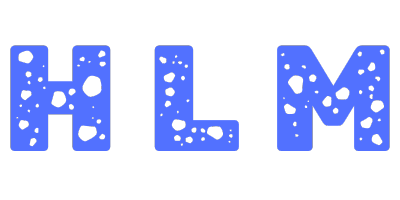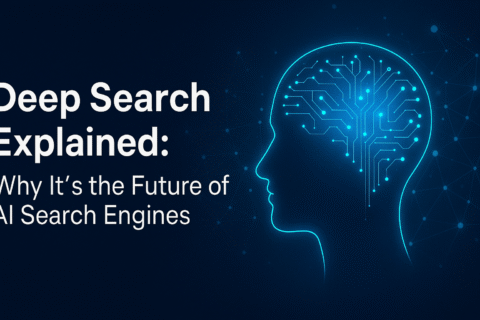Introduction: Why LLMs Are Defining the AI Frontier
We are witnessing the era of Large Language Models (LLMs) fundamentally reshaping how we live, work, learn, and build. From ChatGPT scripting your emails to Claude summarizing a 200-page contract or Gemini responding in real-time across modalities, the capabilities of current AI tools are rapidly evolving.
Among this AI arms race, a new name has risen from the East: DeepSeek R1 — China’s ambitious, open-source contender that challenges the dominance of proprietary models like GPT-4, Claude 3, Gemini 2.5, and Mistral.
So, what makes DeepSeek R1 different from the closed models developed by OpenAI, Anthropic, and Google? Why are developers across Asia and beyond choosing it as their go-to foundation model?
In this DeepSeek R1 review, we break down the key technological, architectural, philosophical, and practical differences between DeepSeek R1 and today’s top-tier LLMs. Whether you’re an AI researcher, builder, or CTO exploring your next deployment strategy, this is your comprehensive guide to navigating the landscape of open-source LLMs in 2025.
What is DeepSeek R1?
Origins and Release
DeepSeek R1 was launched by DeepSeek AI, a Chinese AI lab with a vision to provide powerful and transparent LLMs for global use. First released in late 2023 and updated in early 2024, it quickly emerged as one of the most scalable and performant open-source LLMs on the market.
Core Specs
Parameter Count: 236 billion (sparse Mixture-of-Experts architecture)
Architecture: Transformer-based MoE with 64 experts, 2 active at inference
Training Dataset: 3.2 trillion tokens (English and Chinese data)
Context Window: 32,000 tokens
Performance: Competent on MMLU, GSM8K, and HumanEval benchmarks
Design Principles
Transparency: Training dataset details, model weights, and architecture are publicly available.
Alignment Strategy: Instruction tuning + supervised fine-tuning with RLHF pipeline in progress.
Open-Source Commitment: Models released under a permissive license on HuggingFace and GitHub.
In essence, DeepSeek R1 is designed for openness, multilingual use, and compute-efficiency without sacrificing LLM-grade performance.
Overview of GPT-4 and Other Key LLMs
GPT-4 / GPT-4 Turbo / o3 / o4-mini / o4-mini-high
Developer: OpenAI
Release: GPT-4 (Mar 2023), GPT-4 Turbo & variants (Nov 2023 – early 2025)
Architecture: Undisclosed (possibly MoE or hybrid dense-sparse)
Context Window: Up to 128K tokens (GPT-4 Turbo)
Strengths: Strong reasoning, memory, tool integration, plug-and-play via API
Limitations: Closed-source, costly, English-centric
Claude 3 (Anthropic)
Philosophy: Constitutional AI for safer, aligned outputs
Context Window: 200K+ tokens
Strengths: Long-document reasoning, emotional intelligence, alignment-first design
Limitations: Closed-source, limited developer customizability
Gemini 2.5 (Google)
Multimodal: Handles image, text, code, and audio
Context: Over 1M tokens
Strengths: Ecosystem integration (Google Search, Workspace)
Limitations: Not open-source, limited fine-tuning access
Mistral / Mixtral
Developer: Mistral.ai (open-source community-driven)
Architecture: MoE-based Mixtral (56B parameters)
Strengths: Lightweight, fast inference, permissive Apache 2.0 license
Limitations: Smaller scale, narrower training distribution
Core Differences: DeepSeek R1 vs GPT-4 and Others
Architecture & Performance
DeepSeek R1: Sparse MoE (2 of 64 experts), optimized for large-scale inference.
GPT-4: Likely dense or hybrid MoE, undisclosed.
Claude 3: Long context, likely dense.
Mistral/Mixtral: MoE with a smaller footprint.
Training Data: Open vs Proprietary
DeepSeek: 3.2T tokens, open-source data disclosures.
GPT-4, Claude, Gemini: Closed datasets with minimal transparency.
Licensing and Openness
DeepSeek R1: Weights and training code available under open terms.
Mistral: Fully open-source.
GPT-4, Claude, Gemini: API-only access, no weights.
Inference Efficiency
DeepSeek uses MoE to reduce active parameter usage at inference.
Mistral also offers fast inference at scale.
GPT-4 Turbo reduces cost via backend tricks, but still opaque.
Multilingual Capabilities
DeepSeek is bilingual-first (English + Chinese), with competitive accuracy in both.
GPT-4 and Claude support multiple languages with variable performance.
Gemini is expanding non-English capabilities rapidly.
Fine-Tuning & Use-Case Flexibility
DeepSeek supports LoRA, QLoRA, and direct fine-tuning.
GPT-4 and Claude offer minimal/no fine-tuning access.
Mistral is highly tunable and modifiable.
Safety, Alignment, and Ethics
GPT-4 and Claude lead in safety via RLHF and guardrails.
DeepSeek is developing its alignment infrastructure with community participation.
Memory and Long-Context Handling
Claude: Up to 200K tokens
GPT-4 Turbo: Up to 128K
DeepSeek R1: 32K tokens
Side-by-Side Comparison Table
| Feature | DeepSeek R1 | GPT-4 Turbo | Claude 3 | Gemini 2.5 | Mixtral |
|---|---|---|---|---|---|
| Architecture | Sparse MoE | Unknown | Dense | Dense + Multimodal | Sparse MoE |
| Open-Source | ✅ | ❌ | ❌ | ❌ | ✅ |
| Context Limit | 32K | 128K | 200K | 1M+ | 32K |
| Fine-Tuning | ✅ | ❌ | ❌ | ❌ | ✅ |
| Licensing | Open | Proprietary | Proprietary | Proprietary | Apache 2.0 |
| Strengths | Efficiency, bilingual, dev-friendly | Reasoning, API tools | Safety, long context | Multimodal, live data | Fast inference, open |
Real-World Use Cases & Developer Adoption
DeepSeek R1 is already being deployed in:
Search augmentation platforms in Asia
Educational chatbots tuned for bilingual instruction
Enterprise QA systems with China-specific datasets
Communities on HuggingFace, GitHub, and Chinese developer forums have adopted DeepSeek for:
Localized fine-tuning
Document understanding
Cross-lingual applications
Why This Comparison Matters
As AI goes mainstream, the choice between open vs closed LLMs isn’t just about performance. It’s about:
Innovation velocity (open = iterate faster)
Data sovereignty (self-hosted = compliance)
Customization (open = specialized tasks)
DeepSeek R1 vs GPT-4 isn’t a zero-sum game. It’s a sign that we’re entering a multi-model future. Closed models might win on polish; open models win on control.
Final Thoughts
DeepSeek R1 has proven that open-source LLMs in 2025 can rival commercial leaders. It empowers developers to:
Inspect, adapt, and deploy locally
Reduce cost without losing capability
Build models aligned to local values and needs
Still, models like GPT-4 Turbo and Claude 3 offer unmatched polish and plug-and-play safety—great for enterprise, but not as developer-friendly.
The takeaway? Try both. Evaluate them side-by-side in your workflow, and see which aligns better with your project’s needs, values, and budget.
FAQs
Q: What is DeepSeek R1?
A: DeepSeek R1 is a powerful open-source LLM built by DeepSeek AI with 236B sparse MoE architecture, designed for multilingual tasks and developer accessibility.
Q: DeepSeek R1 vs GPT-4: Which is better?
A: GPT-4 is better for plug-and-play SaaS; DeepSeek is ideal for open-source, customizable, and multilingual deployments.
Q: Is DeepSeek R1 really open-source?
A: Yes. It is hosted on HuggingFace and GitHub with transparent weights, architecture, and fine-tuning support.
Q: How is DeepSeek different from GPT-4 in terms of training data?
A: DeepSeek’s dataset composition is more transparent, especially for bilingual tasks, while GPT-4 uses undisclosed proprietary data.
Q: Can I use DeepSeek R1 in production?
A: Yes. Many developers in China and globally are deploying it for research, education, and enterprise AI apps.


